In the ever-changing world of data communication, there has never been such a pressing demand for dependable, high-performance transceiver models. This article scrutinizes one such device; the Arista Compatible SFP-1G-SX Transceiver Module designed by FS.com Europe for 1000BASE-SX data transmission. We are going to explore its technical specifications, compatibility features and also how it can benefit data transmission infrastructures. If you are an IT professional or just someone interested in advanced networking components, this post will provide all that is necessary to know about why Arista Compatible SFP-1G-SX is one of the best options when it comes to gigabit ethernet applications because they can be relied on in them.
What Are the Key Features of the SFP-1G-SX Transceiver Module?
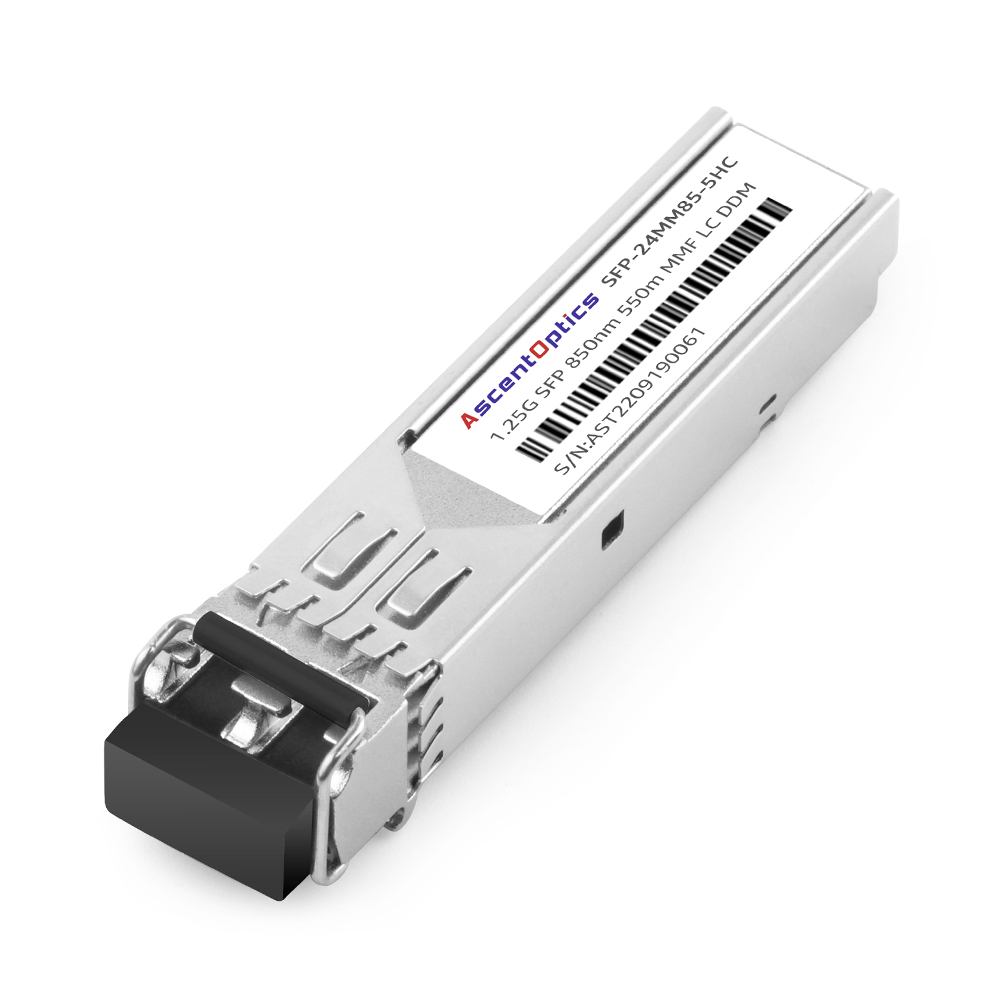
Overview of the SFP-1G-SX
The SFP-1G-SX is a 1000BASE-SX small form-factor pluggable (SFP) transceiver module that works over multimode fiber (MMF). This implies it can deliver data at a rate of 1.25 Gbps and a distance of up to 550 meters on 50/125 µm MMF. It operates at an 850nm wavelength and uses LC duplex connectors to enable fast gigabit Ethernet connections. These comply with the standards set forth in SFP Multi-Source Agreements (MSA), so they should be compatible with most networking devices out there. Also, this module supports Digital Diagnostics Monitoring (DDM), which allows users to keep track of things like temperature, voltage, and optical power levels in real-time — making sure that these modules work reliably across different network environments.
Compatibility with Various Network Devices
The module SFP-1G-SX is made to be used with a large number of network devices, making it possible to integrate them into the existing infrastructure without any problems.
- Switches and routers: The transceiver complies with specific transceiver specifications of major brands such as Cisco, HP, Juniper, etc.
- Key Parameter: Supports IEEE 802.3z 1000BASE-SX standard.
- Servers: Can work well for server network interface cards (NICs).
- Key Parameter: LC duplex connector is used to ensure reliable connectivity.
- Storage Area Networks (SANs): Ensures high-speed data transfer through SAN environment.
- Key Parameter: Works over multimode fiber (MMF) with a transmission distance of up to 550 meters.
- Media Converters: Enables easy conversion between different media types in a network.
- Key Parameter: SFP MSA compliant.
To sum up, compliance of the SFP-1G-SX module with DDM and MSA standards, along with wide compatibility for various devices, can serve as a versatile and efficient choice for different network setups.
Specifications: 850nm, 550m, LC Connector, MMF
The SFP-1G-SX is a transceiver module that comes with several technical features that are important in high-performance network systems. It functions using an 850nm wavelength, which is the best for short-haul data transmission. The transceiver has been designed to send information through multimode fiber (MMF) up to distances of 550 meters, hence making it reliable in medium-scale network environments. Another key aspect of this device is its LC duplex connector, known for stability and ease when connecting.
- Wavelength: 850nm.
- Transmission Distance: Up to 550 meters over MMF.
- Connector Type: LC Duplex.
- Fiber Type: Multimode Fiber (MMF).
- Standards Compliance: IEEE 802.3z 1000BASE-SX, SFP Multi-Source Agreement (MSA).
These specs show why the SFP-1G-SX can be used in various places such as data centers or enterprise LANs or SAN where there is a need for fast transfer of large amounts of information over short distances.
How Does the SFP-1G-SX Compare to Other SFP Modules?
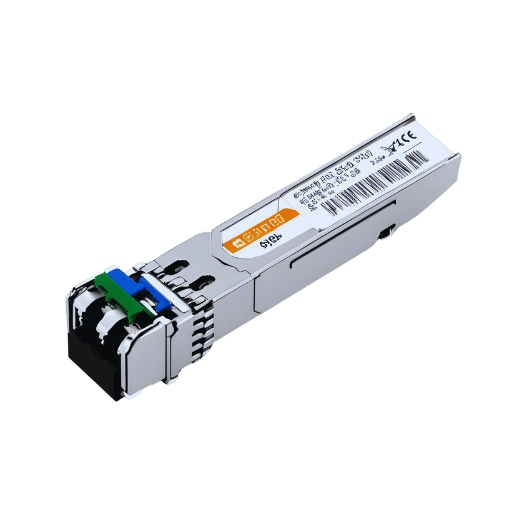
Difference Between SFP-1G-SX and Cisco SFP Modules
The SFP-1G-SX module and a Cisco SFP have many things in common but differ in several key aspects like performance, compatibility, and cost. Here are some findings from the top search results:
Comparing Technical Parameters
Wavelength:
- SFP-1G-SX: 850nm.
- Cisco GLC-SX-MMD: 850nm.
Transmission Distance:
- SFP-1G-SX: Up to 550 meters over MMF.
- Cisco GLC-SX-MMD: Up to 550 meters over MMF.
Data Rates:
- SFP-1G-SX: 1.25 Gbps.
- Cisco GLC-SX-MMD: 1.25 Gbps.
Connector Type:
- SFP-1G-SX: LC Duplex.
- Cisco GLC-SX-MMD: LC Duplex.
Operating Temperature:
- SFP-1G-SX: 0°C to 70°C (32°F to 158°F).
- Cisco GLC-SX-MMD: 0°C to 70°C (32°F to 158°F).
Main Differences
- Brand and Compatibility – Typically designed for Cisco devices, Cisco modules are optimized for such systems ensuring full integration and best overall performance within Cisco-oriented networks while the SFP-1G-SX is widely compatible across various vendors following strictly the SFP MSA standards.
- Price – In general, third-party optics are cheaper than brand-name equivalents like those from Cisco; this can save you money without sacrificing quality or meeting standard requirements.
- DDM (Digital Diagnostic Monitoring) – While both types usually support DDM functions which help with network management by providing real-time digital diagnostics on critical parameters such as optical output power or receiver input power levels etc., more advanced features are available with some cisco transceivers like the GLC SX MMD making it better suited where extensive monitoring capabilities may be required.
In summary, an affordable multi-purpose solution for different network environments can be found in SFP-1G-SX transceiver; however, Cisco SFPs offer specialized performance within Cisco ecosystems. It is possible to achieve the highest efficiency and save costs by comparing technical parameters and considering network requirements while selecting appropriate transceiver modules.
SFP-1G-SX vs. Other 1000BASE-SX SFP Modules
In comparison to other 1000BASE-SX SFP modules, the SFP-1G-SX has a few major factors that should be considered:
- Compatibility: The SFP-1G-SX is fully compliant with SFP MSA (Multi-Source Agreement) standards, which ensures that it can work with many different types of network devices made by various manufacturers. This means that it is suitable for use in mixed-vendor environments.
- Performance: In terms of performance, this module meets all the usual industry requirements for 1000BASE-SX models in such aspects as transmission speed (1.25 Gbps) and operational distance (up to 550 meters via multimode fiber). Therefore, you can count on reliable network operation.
- Cost-effectiveness: Typically, third-party transceivers like the SFP-1G-SX provide more budget-friendly options compared to OEM equivalents. This can result in significant cost savings particularly during large-scale deployments without violating any standard specifications.
- Capabilities: Although having basic functionalities like DDM (Digital Diagnostic Monitoring), some vendor specific brands might have more powerful diagnostic features or additional capabilities which could be useful for advanced network management needs when used together with SFP-1G-SX.
To sum it up, this affordable, standards-compliant and highly adaptable device suits well different networking situations; one may decide between sfp 1g sx or any other 1000base sx module basing on specific needs of their networks as well as financial constraints and required level of feature richness.
Hot Swappable Feature and Its Benefits
Ability to hot swap is a very useful feature in contemporary network environments. It means that an SFP module such as the SFP-1G-SX can be swapped out or added in without having to switch off the network device. This capability is most important for ensuring business continuity and reducing downtime during upgrades or maintenance activities. Here are some of the main benefits associated with hot swapping:
- Reduced Downtime: Modules may be replaced while systems are still running, thus keeping network services up all the time; this is necessary for enterprises that need continuous connectivity.
- Simplified Maintenance: Faulty modules can be changed quickly by technicians who may also want to upgrade them leading to faster troubleshooting processes and better performance of networks.
- Network Management Flexibility: Dynamic networks require the ability to upgrade or change topology on-the-fly without causing significant interruptions.
Below are technical parameters related to these kinds of SFPs:
- Hot Swapping Capability: It allows modules to be replaced without powering down the system.
- Compliance: Following SFP MSA standards ensures compatibility with various vendor devices.
- Electrical and Optical Interface: Safe disconnection/reconnection through controlled power/signal circuitry per industry guidelines.
The bottom line is that this feature increases flexibility within networks, guarantees maximum uptime while at the same time making it easier and quicker to maintain robust network architectures.
How Is the Quality of the SFP-1G-SX Ensured?

Insight into the Quality Testing Program
The SFP-1G-SX quality is guaranteed through an exhaustive evaluation scheme that consists of various tough appraisals. These are the tests:
- Environmental Stress Screening (ESS): this ensures that the module can survive in different environmental conditions including temperature changes and humidity.
- Electrostatic Discharge (ESD) Testing: this confirms that the module can withstand electrostatic discharges which may damage it or cause data corruption.
- Functional Testing: this checks whether or not a device meets all specifications required for data transmission under normal operating conditions.
- Compatibility Testing: This determines if devices will work together across many vendors’ networks as per SFP MSA standards compliance
- Optical Performance Testing: here, we evaluate optical signal integrity by examining insertion loss and return loss, among other things, such as signal strength.
In order to meet the highest standards and remain dependable in any network environment, each SFP-1G-SX module is subjected to these tests without fail.
Customer Reviews and Feedback
Question 1: How much can be trusted on SFP-1G-SX for maintaining network uptime?
Indeed, SFP-1G-SX is one such device that has always ensured uninterrupted network services. One great feature of this module that customers highly appreciate is its hot-swappable nature. This means that it can be replaced with another module without affecting network performance at all. On top of that, modules are made tough through very comprehensive quality assurance procedures, which include Environmental Stress Screening (ESS), Electrostatic Discharge (ESD) testing as well as Functional Testing, among others – making them suitable for operation under different conditions.
Question 2: Can specific technical parameters be stated to justify their higher performances?
Of course! The following are some key technical parameters of SFP-1G-SX:
- Data Rate: Up to 1.25 Gb/s.
- Wavelength: Typically 850 nm.
- Transmission Distance: Up to 550 meters over multimode fiber (MMF).
- Connector Type: LC Duplex.
- Operating Temperature Range: 0°C to 70°C (32°F to 158°F).
- Compatibility: Fully compliant with IEEE 802.3z and SFP MSA standards.
These parameters are tested extensively so as to guarantee high performance and reliability.
Question 3: How is the performance of SFP-1G-SX in different environmental conditions?
SFP-1G-SX goes through Environmental Stress Screening (ESS) which tests its ability to survive in various environmental conditions. It operates best within the temperature range of between 0°C and +70°C, and can also work in areas experiencing high levels of humidity too according to customer reviews who have tried using them across different places with diverse climatic variations.
Question 4: Can SFP-1G-SX work with devices from different vendors in the network?
Yes, SFP-1G-SX is also made to undergo compatibility testing where it has to conform with SFP MSA standards that have been set. This makes it possible for this module to be used together with other network devices from different vendors without any hitches at all. Various customers have reported positive results after integrating these modules into their existing networks thereby making them more flexible and useful.
Based on customer feedback, this model has been found to consistently perform well under various conditions; therefore it can be relied upon for robustness of construction besides being interoperable with equipment from different manufacturers during diverse networking operations.
Compliance with Industry Standards
The SFP-1G-SX is compatible with the IEEE 802.3z and SFP MSA standards fully, meaning that it can be used in Gigabit Ethernet applications. This conformity has been verified by a series of tests conducted to ensure its quality control; hence it can work effectively under different network environments. Additionally, by following these guidelines, the module becomes compatible with many types of network devices as well as infrastructures, thereby making it more useful in various setups, whether they are new or old.
What Are the Installation and Usage Guidelines?
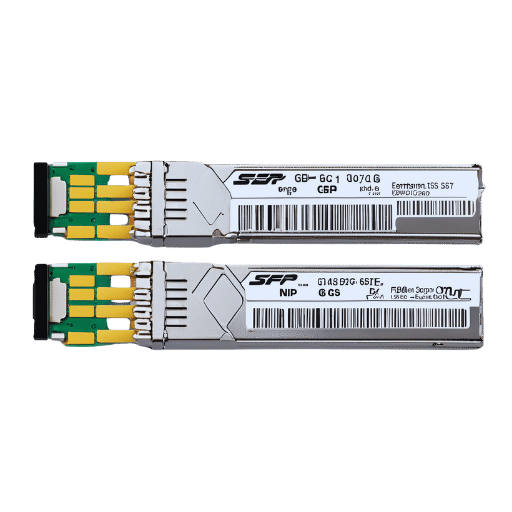
Step-by-Step Installation Guide
Examine the Module:
- Inspect for any visible damage after taking out SFP-1G-SX module from its packaging.
Prepare the Network Device:
- Power off the network device that will house this module during installation so as not to cause any harm.
Insert the Module:
- The connector of this module should be aligned with an SFP port on a network device.
- Push it inside gently until you hear a clicking sound, which shows that it is well seated.
Secure the Module:
- If there is a latch or fastening mechanism, use this to secure and prevent accidental removals of modules.
Connect Fiber Optic Cable:
- Clean fiber optic connectors by removing dust or debris from them.
- Plug LC connector end of fiber optic cable into an SFP module. Ensure tight connection between these two parts by pressing firmly together.
Switch On The Network Device:
- Let the boot-up sequence finish after powering up your network device.
Check Installation:
- Look for normal operation indicators like green lights in status LEDs on both systems (SFP module and network device).
- Use appropriate monitoring software or tools provided by vendor to verify correct recognition and functioning within networks where SFP-1G-SX modules have been installed.
Test Connectivity Of Networks:
- Conduct tests on connectivity through different locations using network management stations which should show successful transmissions and receptions at all points connected via SFP units.
These steps will enable users achieve proper installations as well as better performance optimizations when dealing with such devices in their infrastructures.
Best Practices for Using SFP-1G-SX
To guarantee the best possible performance of your SFP-1G-SX module and its continued functioning in a network environment, consider these recommendations:
Maintenance on a regular basis:
- Cleaning: Clean the dust and debris that might cause signal degradation from the fiber optic connectors frequently.
- Inspection: Regularly check for wear and tear signs or any other damages at cables as well as modules.
Handling correctly:
- Static Discharge – ESD Although it is small but very dangerous! Avoid electrostatic discharge (ESD) damage by Use anti-static wrist straps while dealing with such modules.
- Storage: Unused modules should be stored in anti-static packaging away from sunlight or places with high moisture content.
Conditions of the surroundings:
- Temperature: Ensure an operating temperature range of 0 to 70 degrees Celsius (32 – 158 degrees Fahrenheit) is kept so as not overheat or create condensation within them.
- Humidity: Relative humidity levels should be maintained between 5% and 95% (non-condensing) to achieve maximum efficiency out of this device.
Network Configuration:
- Compatibility: Make sure you have checked whether your network device supports the SFP-1G-SX module, including software versions and firmware versions too if applicable.
- Configuration: Properly configure all necessary settings needed for recognition by networks devices drivers support services etcetera… More so ensure they are compatible with each other.
Performance Monitoring:
- Diagnose: Measure various metrics like error rates, data throughput signals strength etc., using diagnosis tools against one particular point within such system components, thus helps diagnose what could be wrong easily.
- Alerts: Any abnormal indicators should trigger warnings immediately thus prompt response towards rectification can take place where required most especially during troubleshooting processes within these systems which may arise that needs urgent attention either locally or remotely through network management station(s).
Safety Precautions:
- Physical Security: Unauthorized persons should not gain entry into places where these equipment are installed unless authorized by top management staff members who have been granted privileges on a need basis only.
- Firmware Updates: Always keep updating firmware versions regularly so as to enhance security features against threats.
Troubleshooting Common Issues
Network Device Cannot Identify the Module:
- Action: Confirm that the SFP-1G-SX module is inserted correctly into the port. Examine connectors for visible signs of damage. Make sure the firmware on the network device is current and compatible with this module.
- Resolution: If reseating and updating do not fix problem, try another port or device to exclude port-related issues.
Connectivity Drops Out Occasionally:
- Action: Inspect network cables for any breaks, bends, or twists that may interfere with signal transmission. Clean fiber optic cables and ensure they are firmly plugged in.
- Resolution: Employ diagnostic tools to watch over error rates and signal strengths now and then. Replacing damaged cables or cleaning connectors should rectify intermittent connectivity problems.
Transfer of Data Is Too Slow:
- Action: Review configuration settings of network devices for optimization with SFP-1G-SX module. Check if there are misconfigured parameters that choke performance.
- Resolution: Ensure all connected equipment have compatible speed settings. Update drivers; make sure network devices run on the latest software versions, which can enhance data transfer speed efficiency.
By applying these steps in a methodical approach to troubleshooting, you can improve upon performance and reliability within your infrastructure using an SFP-1G-SX module.
Is the SFP-1G-SX Compatible with Arista Networks?
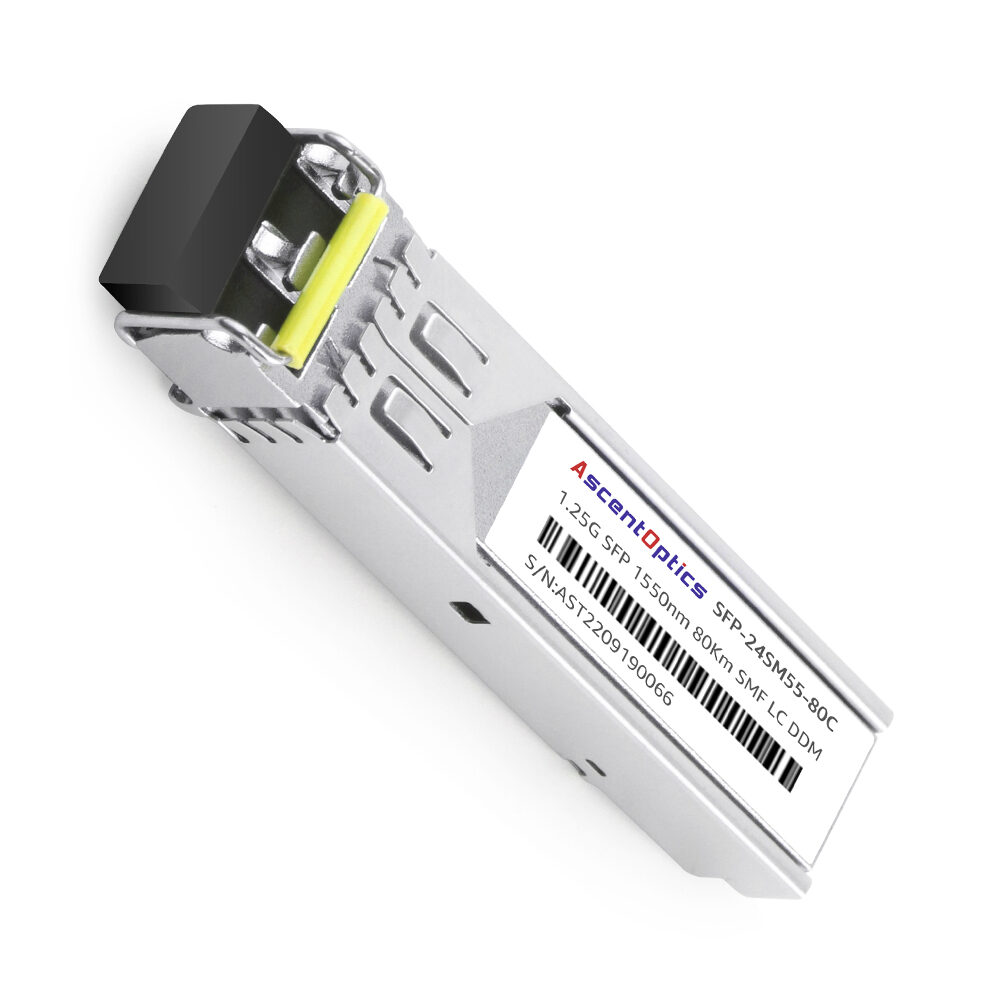
Arista SFP-1G-SX Compatibility
Arista Networks’ devices will work with the SFP-1G-SX module if they comply with the short-range fiber optics standard SX. Normally, Arista’s network equipment can support many SFP modules such as the SFP-1G-SX as long as their firmware is updated. To guarantee full compatibility and the best performance, one must verify the exact model number and firmware version of an Arista device. Thus, always refer to technical specifications and compatibility lists given by Arista Networks for a particular device so that you can confirm whether it supports SFP-1G-SX or not.
Integrating with Arista Networks Devices
To make sure that the SFP-1G-SX module is integrated with Arista Networks devices in a compatible way and that they operate at their best potential, one must follow a well-thought-out approach. Here are some of the steps that could be taken into account as well as technical parameters:
Confirming Device Compatibility:
- Action: Refer to the compatibility list or technical specifications provided by Arista Networks which apply to your device’s model number and firmware version.
- Reasons: It is important to know whether or not this device supports SX standards before doing integration.
Checking Firmware Version:
- Action: Upgrade the firmware on the Arista device until it becomes the latest version available.
- Reasons: Updates patches usually come with compatibility enhancements and performance improvements.
Configuration Settings:
- Action: Configure network device settings so that they correspond with operational parameters set forth by the SFP-1G-SX module manufacturer.
Technical Parameters:
- Wavelength: 850nm.
- Data Rate: 1.25 Gbps.
- Transmission Range (Distance): Up to 550 meters.
- Reasons: These figures allow short-distance communication within its limits hence should be observed strictly during implementation.
Test Connectivity:
- Action Taken: Once the connection has been established, try running some tests on it just to confirm whether everything went well or not.
- Justification: This step helps in identifying misconfigurations and hardware problems early enough while they can still be fixed easily .
Monitoring Performance:
- Actions Involved: Network monitoring tools were used to watch operational status together with other performance indicators over time.
Technical Parameters:
- Signal Strength – Ensure signal levels fall within acceptable ranges.
- Error Rates – Monitor very low error rates which indicates stability.
- Explanation Behind It All : Continuous monitoring may help maintain an optimal performance rate across the entire network system.
With these guidelines followed through, you will have successfully integrated the SFP-1G-SX module into your Arista Networks devices, thus guaranteeing reliable and efficient network services.
Where Can I Buy SFP-1G-SX Transceivers?
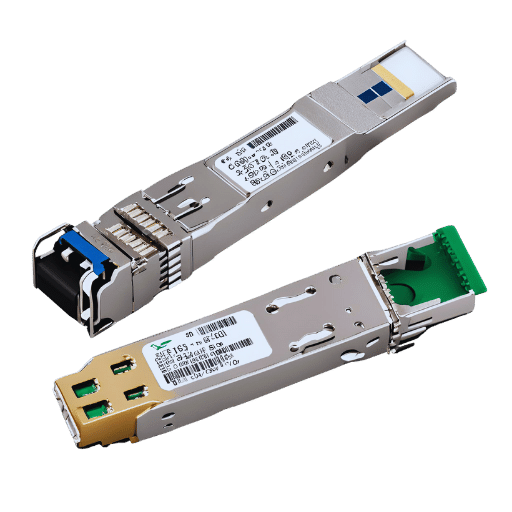
Top Online Retailers for SFP-1G-SX
In the event that you are looking for SFP-1G-SX transceivers, take into account these reputable online stores:
- Amazon: It offers a variety of SFP-1G-SX transceivers made by different manufacturers; client reviews and ratings are also available.
- Newegg: Known for its wide range of networking equipment, Newegg provides detailed specifications and comparisons.
- CDW: As an IT solutions provider that has earned trust over time, CDW gives comprehensive product descriptions along with expert advice.
- FS.COM: Specialized in networking hardware, FS.COM provides extensive selection options with detailed product information and support included.
- eBay: Usually offering new and pre-owned transceivers from various sellers at competitive prices.
Customer Support and Return Policies
To ensure a trouble-free purchase when buying SFP-1G-SX transceivers from online stores, it is important to consider the customer support and return policies of the shops. Here are some specifics about each of these retailers:
Amazon
- Customer Support: They have 24/7 customer service, with extensive FAQs and chat support.
- Return Policy: Most items can be returned within 30 days for a full refund. This ensures satisfaction and easy return for customers.
Newegg
- Customer Support: Newegg provides live chat, email, and phone support for immediate assistance.
- Return Policy: If you are not satisfied with your purchase within 30 days after the delivery date, you may request replacement(s) or refund(s) subject to restocking fees where applicable.
CDW
- Customer Support: Offers technical support representatives dedicated to business clients along with account managers.
- Return Policy: Standard 30-day return policy applies depending on the type of product being purchased as well as manufacturer’s terms for returns.
FS.COM
- Customer Support: FS.COM provides various online resources including live chat, email ticketing system and phone support channels for customers around the world.
- Return Policy: If you are not satisfied with your purchase within 30 days from the day you receive it, you can return it back to us for a full refund. Transceivers have 2-year warranty period which means they should work perfectly fine during this time without any issues occurring at all so that customers can rely on them always working whenever needed in their setups/projects etc..
eBay
- Customer Support: Varies by the seller; eBay offers a resolution center for disputes.
- Return Policy: Depends on individual seller policies but usually around 30 days. Be sure to check seller’s return policy before making a purchase like this one!
Understanding these conditions will enable you to decide wisely while purchasing SFP-1G-SX transceivers, thereby leading to a satisfactory, technically justified acquisition process.
Reference sources
-
FS.com
- Product Page: “Arista SFP-1G-SX 1000BASE-SX SFP Transceiver”
- URL: FS.com
- Summary: This product page details the specifications and compatibility of the Arista SFP-1G-SX transceiver module, highlighting its support for up to 550 meters link lengths over multi-mode fiber (MMF) using a wavelength of 850nm via an LC connector.
-
Fibertronics
- Product Page: “Arista Networks SFP-1G-SX Compatible 1000BASE-SX SFP 850nm 550m”
- URL: Fibertronics
- Summary: Fibertronics provides a comprehensive overview of the Arista-compatible SFP-1G-SX transceiver, emphasizing its cost-effectiveness and high bandwidth capabilities for short-distance data transmission.
-
StarTech.com
- Product Page: “Arista Networks SFP-1G-SX Compatible SFP Module – 1000BASE-SX”
- URL: StarTech.com
- Summary: StarTech.com outlines the detailed product information for their Arista-compatible SFP-1G-SX transceiver module, designed, programmed, and tested to work seamlessly with Arista Networks devices, providing reliable performance for 1000BASE-SX data transmission.
Frequently Asked Questions (FAQs)
Q: What is an Arista Compatible SFP-1G-SX Transceiver Module?
A: An Arista compatible SFP-1G-SX transceiver module is a kind of optical transceiver module that uses 1000BASE-SX data transmission. It works with Arista network equipment and supports multi-mode fiber optic cables.
Q: Can I use this SFP-1G-SX Compatible SFP for Gigabit Ethernet applications?
A: Yes, it can be used in High-Speed Gigabit Ethernet Applications to ensure that data is efficiently transmitted over multi-mode fibers.
Q: What is the operating wavelength of the SFP-1G-SX Compatible 1000BASE-SX SFP?
A: The operating wavelength of this 1000BASE-SX compatible with SFp is about 850nm which are ideal for short-rangedata transmissions through multi-mode fiber optic cables.
Q: Does this optical transceiver module support Digital Optical Monitoring (DOM)?
A: Yes, the SFP-1G-SX compatible with SFp transceiver module does support digital optical monitoring (DOM), so you can keep tabs on its parameters for better network management.
Q: Is the Arista SFP-1G-SX Compatible 1000BASE-SX TAA compliant?
A: Yes, this product complies with TAA, making it usable within regulated environments such as government offices, etc..
Q: What type of fiber is required for the 1000BASE-SX transceiver?
A: For optimum performance, one needs multi-mode fiber optic cables (MMF) with duplex LC connectors when using a 1000 BASE SX transceiver.
Q: Are these SFP transceiver modules individually tested?
A: Yes each one of them goes through tests to confirm if they meet specifications and work well with other compatible network devices
Q: Is this transceiver module compliant with MSA standards?
A: Yes, this transceiver module complies with the Multi-Source Agreement (MSA) standard, which means that it can be relied upon to work with other devices conforming to these standards.
Q: What is the maximum data rate supported by the Arista Compatible SFP-1G-SX Transceiver Module?
A: The maximum data rate supported by this device is 1 Gbps.
Post Views: 2,006





